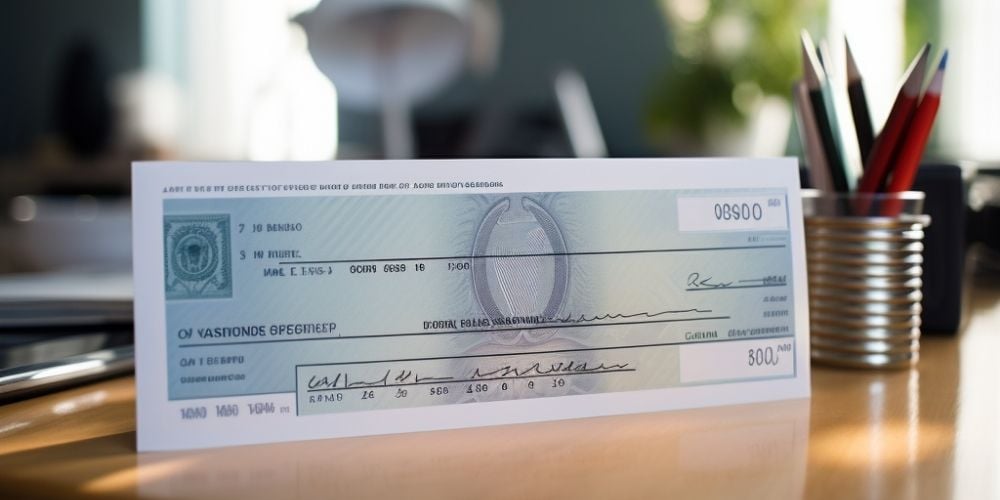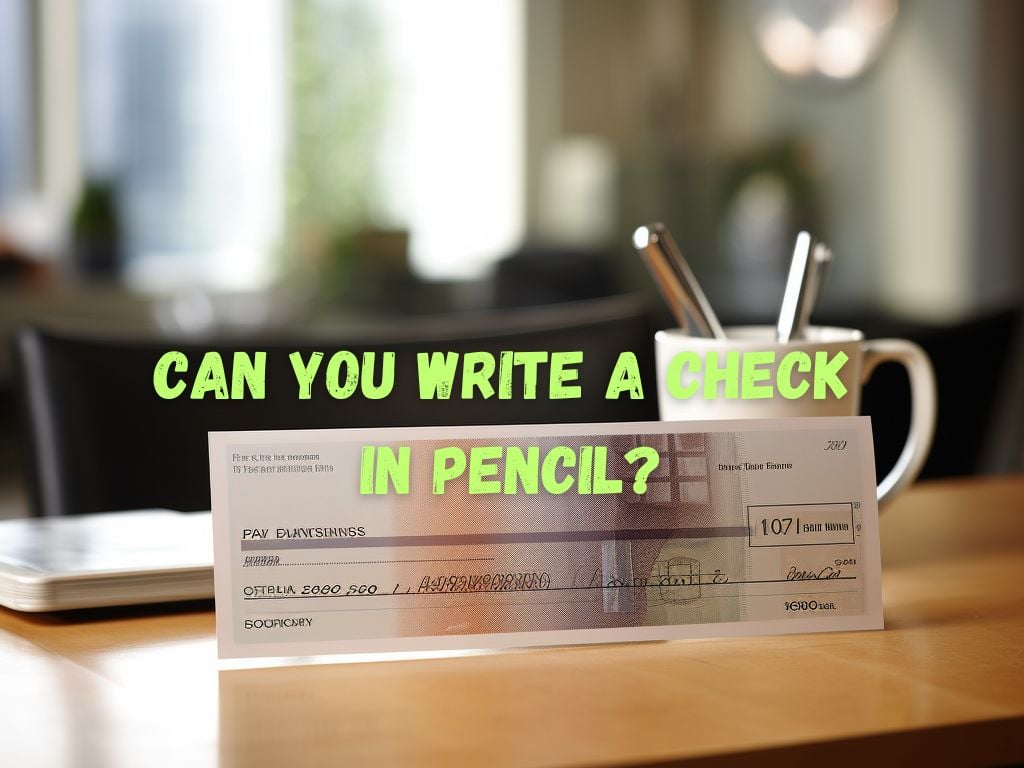Writing checks has been a common practice for making payments for decades. However, when it comes to the writing instrument, one might wonder if using a pencil instead of a pen is acceptable.
So, can you write a check in pencil?
Well, in this article, we will explore the validity and risks associated with writing checks in pencil. Although there is no official rule against it, we will delve into why banks generally do not accept pencil-written checks and the potential risks involved.
Understanding Check Writing Guidelines
Before delving into the specifics of using a pencil to write checks, let’s briefly understand the importance of following check-writing rules.
Check-writing guidelines exist to maintain a standardized format and protect against fraud. Check fraud is a serious concern, as it can lead to financial loss and damages to both businesses and individuals.
Therefore, following proper check-writing guidelines is essential to maintain the integrity of the payment process.
Can You Write a Check in Pencil? Exploring the Legality Of It
When it comes to the legality of writing checks in pencil, there is no specific rule against it. The Uniform Commercial Code (UCC), a set of laws governing commercial transactions in the United States, does not explicitly address the issue of using pencils when writing checks.
While some people argue that pencil-written checks are still legally binding, others caution against the potential risks associated with them.
It is important to understand that even though pencil-written checks may be accepted by some individuals or establishments, banks generally take a different stance.

Banks and Acceptance of Checks Written in Pencil
If you consider using a pencil to write a check, it is crucial to understand the policies of banks regarding this matter.
Most banks have clear guidelines stating that they will not accept checks written in pencil. The primary reason behind this refusal is the potential for check fraud and alterations. Banks prioritize the security of financial transactions and want to minimize the chances of fraud or unauthorized modifications.
Financial institutions have implemented various security measures to prevent check fraud, such as special inks, watermarks, and security features. These measures help banks to verify the authenticity of checks and distinguish them from counterfeit or altered ones.
Pencil marks can be easily erased or tampered with, posing a significant risk to the integrity of the check. Consequently, banks typically require checks to be written in non-erasable ink to ensure the safety of transactions.
Risks and Drawbacks of Writing Checks in Pencil
The decision to write a check in pencil should be based on a comprehensive understanding of the risks involved.
One significant risk is the potential for unauthorized modifications or alterations. Pencil marks can be easily erased or manipulated, allowing dishonest individuals to change important details on the check, such as the payee’s name, the payment amount, or the date.
Check fraud, including check washing and check forging, is a serious concern. Check washing refers to the process of erasing the ink from a check using chemicals, leaving only the printed portions intact. This makes it possible to rewrite the erased details, diverting the payment to a different recipient.
Check forging involves creating counterfeit checks or modifying existing ones. Writing a check in pencil increases the opportunities for such fraudulent activities.
Best Practices for Writing Checks
To ensure the security of your transactions and reduce the risk of fraud, it is recommended to follow these best practices when writing checks:
Use non-erasable pens: Opt for pens that use permanent, non-erasable ink such as ballpoint pens or gel pens. These types of ink are more resistant to tampering and alterations.
Write securely: When filling out a check, apply enough pressure with your pen to leave a visible impression on underlying layers of the paper. This will help prevent check washing by making it more difficult to erase or alter the information.
Protect against fraud: Avoid leaving blank spaces on your checks as they can be manipulated. Fill in all fields, including the date, payee, and payment amount, thoroughly. It is also crucial to double-check the accuracy of the information before signing the check.
Store checks safely: Keep your checkbook and unused checks in a secure location to prevent unauthorized access. This will reduce the risk of checks being stolen or used for fraudulent purposes.

Frequently Asked Questions
Why is it important to write a check in pen rather than pencil?
Writing a check in pen reduces the risk of unauthorized modifications or alterations. Pencil markings can be easily erased, potentially leading to fraud or check washing.
Can I use a pencil on a money order as well?
While the rules may vary by financial institution, it is generally recommended to use a pen when filling out a money order to ensure its validity and prevent fraud.
Should checks be written in pen?
Yes, for security reasons, it is best to write checks in non-erasable ink, such as pen. This helps protect against alterations, forging, and check washing.
What should I avoid when writing a check?
Avoid leaving any blank spaces on your checks, and always double-check the accuracy of the information before signing. Ensure that the payment amount is written in both numbers and words to prevent any discrepancies.
Conclusion
While there is no specific rule prohibiting the use of pencils when writing checks, banks generally do not accept checks written in pencil due to the inherent risks associated with them.
The potential for unauthorized modifications and the ease of erasing pencil marks make pencil-written checks vulnerable to fraud and alterations.
To ensure the security of financial transactions, it is advisable to write checks using non-erasable ink, such as pens.
By following best practices and being mindful of check-writing guidelines, individuals can better protect themselves against potential fraud and maintain the integrity of the payment process.


 Tags:
Tags:










